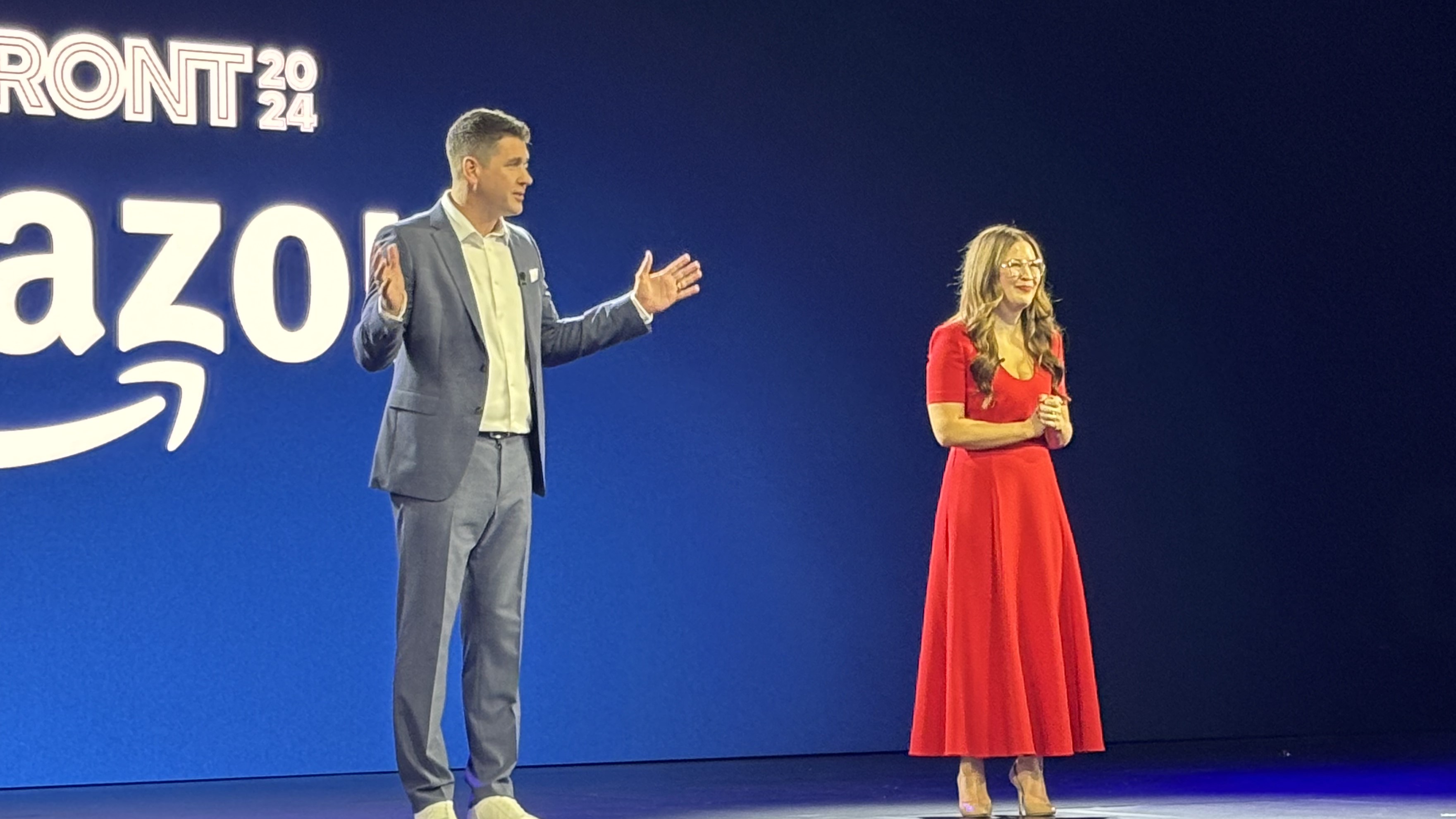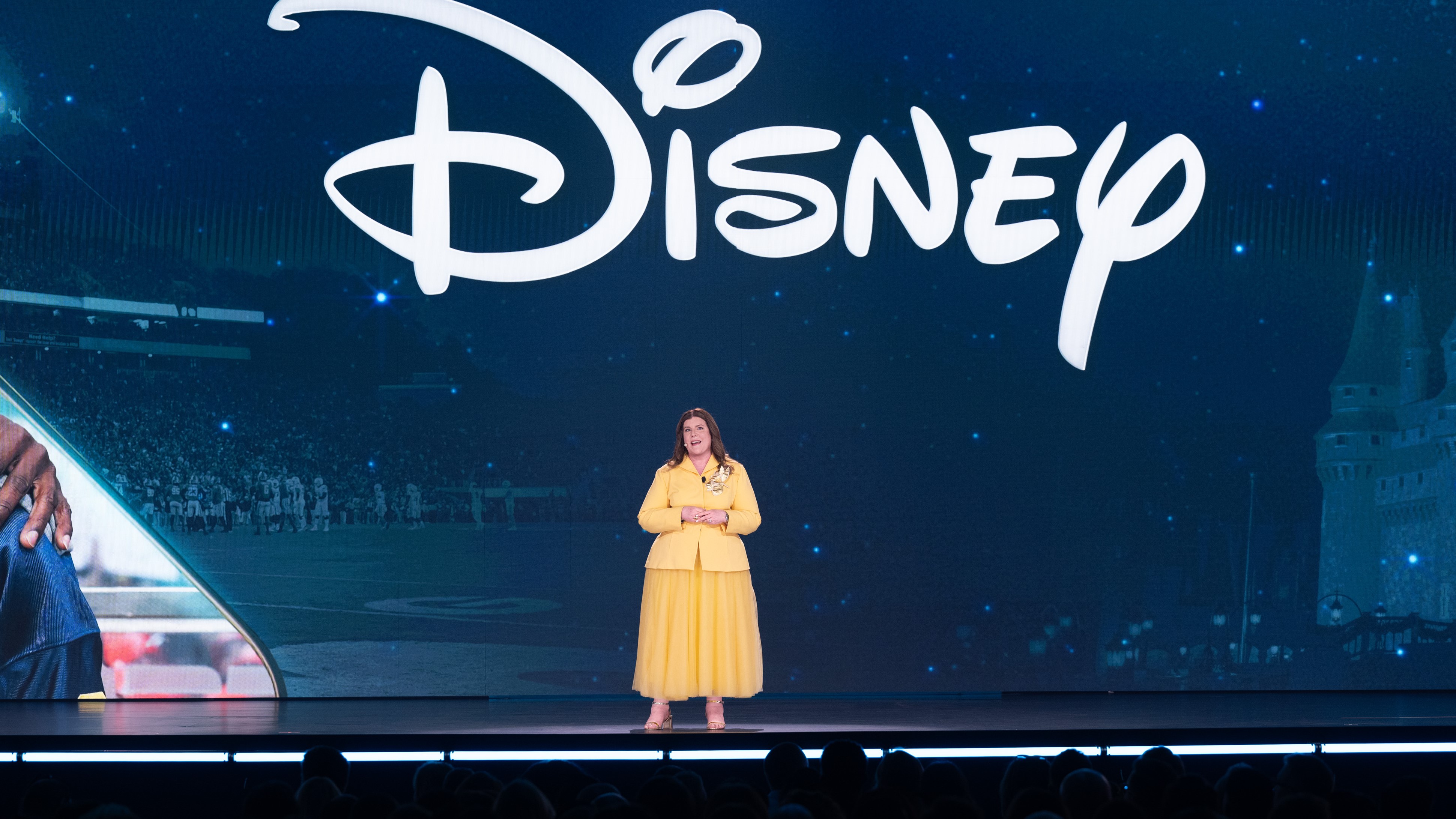
Upfront presentations were once about the shows that would be on the fall primetime schedule.
Now, with media companies racing to become tech companies before tech companies can become media companies, there was a lot of talk about whose data was bigger and who knew how best to bring a marketer to optimization.
On the Radio City Music Hall stage last Monday, NBCUniversal ad sales chairman Mark Marshall regaled attendees with a tale of how the company’s new one platform total audience cross-platform campaign planning tool sold 38% more Domino’s pizza than traditional planning.
Also Read: Continuing Coverage of the 2024 Upfronts
“Results like this don't happen just on their own. It happens when you invest in premium content and data when you leverage linear and streaming all in a 100% brand-safe environment and when you have the unmatched daily ad-supported reach like ours,” Marshall said.
“And we're not stopping there,“ he said. “We’re utilizing our new-gen AI audience capabilities to make these results even stronger by tapping into audience segments around human connections that can be tailored to your brand's KPIs. This is the future of advertising right here right now at NBCUniversal.”
The next day, Amazon said, “hold my beer.”
“This week you're going to hear lots of presentations,” Tanner Elton, VP, U.S. ad sales for Amazon, said. “And everyone's going to talk about their reach, their audience insights, measurement capabilities and, of course, their content.”
“Here’s the critical difference. We're not just an entertainment company trying to monetize our shows with the latest ad tech or third-party audience signals. This is Amazon,” Elton said. “We’re the place those customers come to shop and do so much more, which means we can do things nobody else can do.”
Amazon staked a claim to being the largest ad-supported streaming service, with 200 million subscribers, including 115 million in the U.S.
Alan Moss, VP global ad sales for Amazon, said what his company was delivering is “full-funnel advertising at scale for everyone.”
“With our clean-room and other leading ad tech we can help all advertisers connect awareness and brand objectives directly to sales outcomes and category growth,” Moss said.
Disney was not to be outdone. “We’re leading the transformation in our global advertising business,” said global ad sales president Rita Ferro. “One that is built for the future and anchored in streaming.“
Disney emphasized connecting with customers, another of the week’s themes. Disney claimed it connects with half of the world, every day.

“We have built a reach machine of billions of commercial impressions and scale, all consistently delivering the business outcomes across all the metrics that matter to you,” Ferro said.
Ferro also talked about Disney’s tech stack. “The same platform that powers our entertainment and sports also powers your brands,” she said. “Our technology is making it easier and easier to put your ad in front of the right consumer at the right time, across the Disney universe regardless of screen.”
At Warner Bros. Discovery, the talk was about the WBD Effect. “We know how the WBD Effect drives results,” WBD chief U.S. ad sales officer Jon Steinlauf said. “Our brand partners are already using it to achieve measurable increases in consumer spending, brand awareness and brand perception.”
Steinlauf talked about WBD’s data driven video products.
“[Data-driven video] is powered by Olli, a cutting-edge ad-tech platform that creates streamlined planning activation and measurement,” he said. “We deliver the highest degree of accuracy in a privacy-compliant manner. We monitor delivery and adjust allocations throughout the flight to make sure we're maximizing the efficiency and efficacy of your investment.”
Steinlauf noted that while some ad-supported streaming services now show up to 10 minutes an hour of commercials, Max has just 3.3 minutes of commercials per hour. That gives advertisers “more impact and engagement.”
Meanwhile, Netflix announced it would be building an in-house ad-tech platform. Netflix has been working with Microsoft since launching its ad tier. It will continue to sell ads through Microsoft’s platform, but will also be working with The Trade Desk, Google’s Display & Video 360 and Magnite programmatic platforms.
“Bringing our ad tech in-house will allow us to power the ads plan with the same level of excellence that’s made Netflix the leader in streaming technology today,” said Amy Reinhard, Netflix’s president of advertising.
"We’re being incredibly strategic about how we present ads because we want our members to have a phenomenal experience. We conduct deep consumer research to make sure we stay ahead of the competition, bringing opportunities that are better for members and better for brands,” Reinhard said.
Were media buyers more impressed by the actors on stage and the trailers on the screens, or claims about data, technology and efficiency?
“Talent and star power is still the highlight of the upfronts because content is still important,” one media buyer said. “They need to underpin it with the data, the innovation and the technology.”
The upfront has changed with the media environment, the buyer added. “All of these media sellers understand that the future is not just linear or not just streaming. It is audience first and being able to find that strategic audience across the entire pool of their available supply — be it linear, addressable or streaming,” the buyer said.







